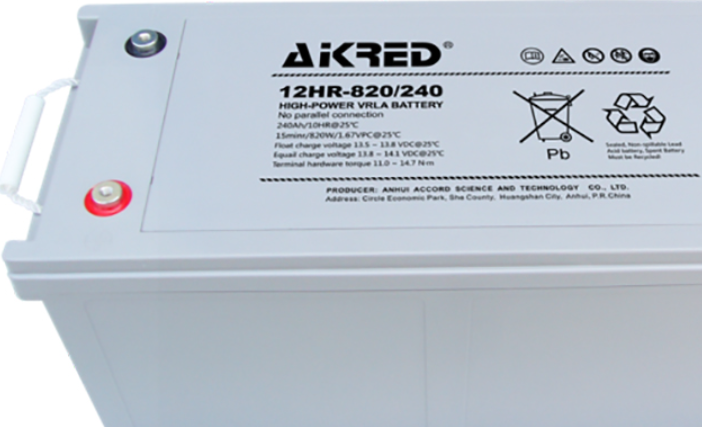Lead-acid batteries are a common type of battery and are widely used in various fields. According to their characteristics and uses, lead-acid batteries can be divided into many types. The following is a detailed introduction to the types of lead-acid batteries: First, from the perspective of structure and use, lead-acid batteries can be divided into several types such as ordinary batteries, dry-charged batteries and maintenance-free batteries. The plate of the ordinary battery is composed of lead and lead oxide, and the electrolyte is an aqueous solution of sulfuric acid, which has the advantages of stable voltage and cheap price, but the disadvantages are low specific energy, short service life and frequent daily maintenance. Dry charge battery is a negative plate with high storage capacity of the battery, in a completely dry state can save electricity for up to two years, only need to add electrolyte when used, wait for a period of time to use. Maintenance-free battery is optimized for its structure, so that the consumption of electrolyte is very small, basically do not need to supplement distilled water, but also has the characteristics of shock resistance, high temperature resistance, small size, small self-discharge, and its service life is generally twice that of ordinary batteries.
Lead-acid batteries can also be classified according to their use, such as starting batteries, fixed batteries, traction batteries, motorcycle batteries, Marine batteries and aviation batteries. Starting batteries are mainly used for starting lighting and ignition of automobiles, tractors and internal combustion engines; The fixed battery is used as the power supply of communication equipment, the switch of power plant and substation, and the standby power supply of computer. The traction battery is mainly used for vehicle drive power, such as the battery car for railway station transportation and the power supply of industrial and mining electric locomotive. In terms of performance, lead-acid batteries can also be divided into dry-charged batteries and non-dry-charged batteries. The plate of a dry-charged battery is in a dry, fully charged state, while the plate of a non-dry-charged battery is in a dry, semi-charged state. Finally, there is a special type of lead-acid battery is the valve-controlled sealed maintenance-free battery, which uses adsorption ultrafine glass fiber separator and negative plate active material excess design, with excellent sealing performance and maintenance-free characteristics. There are many types of lead-acid batteries, and each type has its specific structure and performance characteristics to meet the needs of different fields and applications. With the continuous progress of science and technology, the performance and type of lead-acid batteries are also constantly updated and improved, bringing more convenience to people's life and work.
Lead-acid battery is a common secondary battery, widely used in a variety of equipment and vehicles. It has the advantages of high energy density, relatively low cost and mature technology. According to different classification methods, lead-acid batteries can be divided into many types.

1. Fixed lead-acid battery : mainly used for backup power supply or energy storage system in power systems. Its structural characteristics are that the positive and negative plates are fixed inside the battery housing, and the electrolyte is also fixed in the housing. This type of battery usually has a higher capacity and a longer service life.
2. Mobile lead-acid battery : Usually refers to a rechargeable lead-acid battery, the positive and negative plates can be bent or wound, the electrolyte can be fixed or mobile. This type of battery can be used in occasions that require frequent charging and discharging, such as electric vehicles, power tools, etc.
1. Power lead-acid battery : mainly used to provide power for various equipment, such as electric vehicles, electric bicycles and so on. This type of battery has a high power output and a long cycle life.
2. Energy storage type lead-acid battery : mainly used in electric power system of energy storage and backup power supply, etc. This type of battery has a high energy density and a long service life.
1. Ordinary lead-acid battery : positive and negative plates are made of pure lead material. This type of battery costs less, but the performance is relatively mediocre.
2. Colloidal lead-acid battery : positive and negative plates are made of colloidal material, with good corrosion resistance and long service life.
1. Baffle type lead-acid battery : Use baffle material to separate the positive and negative plates, reducing the risk of plate short circuit. This type of battery usually has a good charge-discharge cycle life.
2. Packaged lead-acid battery : The positive and negative plate and electrolyte are encapsulated in a sealed shell using a special process, which has good safety and reliability.
& have spent Different types of lead-acid batteries differ in their characteristics and their application fields. For example, the power type lead-acid battery has high power output and long cycle life, which is suitable for electric vehicles and other occasions that require frequent charging and discharging; The energy storage lead-acid battery has higher energy density and longer service life, which is suitable for energy storage and backup power supply of power system. In addition, with the development of technology, some new lead-acid batteries such as colloidal lead-acid batteries have also been widely used. In short, different types of lead-acid batteries differ in structure and characteristics, and the appropriate type should be selected according to the specific application. When purchasing and using lead-acid batteries, be sure to follow the manufacturer's guidelines and regulations to ensure safety and performance. At the same time, waste lead-acid batteries should be properly disposed of to protect the environment.